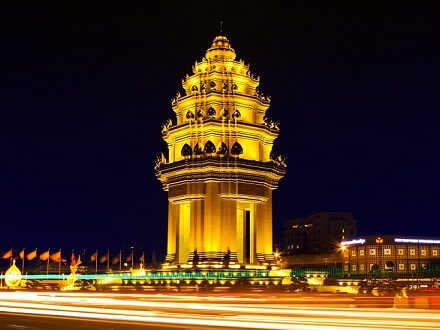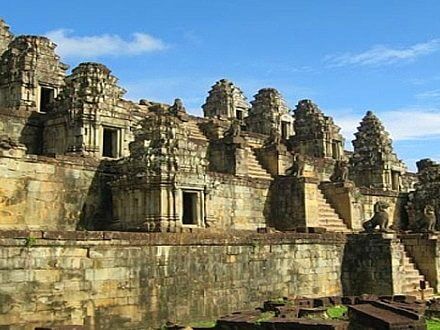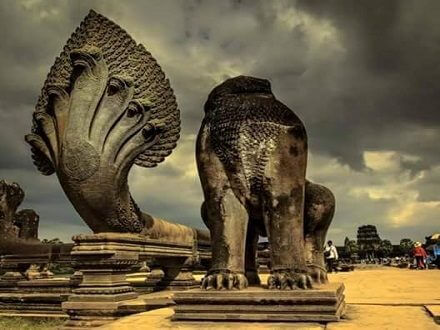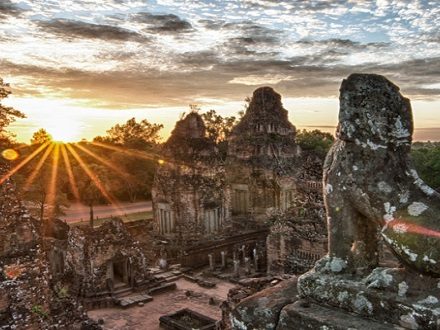
KHMER EMPIRE DISCOVERY
The Khmer Empire is officially the Angkor Empire, the predecessor state to modern Cambodia (“Kampuchea” or “Srok Khmer” to the Khmer people), was a powerful Hindu-Buddhist empire in Southeast Asia. The empire, which grew out of the former kingdoms of Funan and Chenla, at times ruled over and/or vassalised most of mainland Southeast Asia. Its greatest legacy is Angkor, in present-day Cambodia, which was the site of the capital city during the empire’s zenith. The majestic monuments of Angkor—such as Angkor Wat and Bayon—bear testimony to the Khmer Empire’s immense power and wealth, impressive art and culture, architectural technique and aesthetics achievements.
Day 1
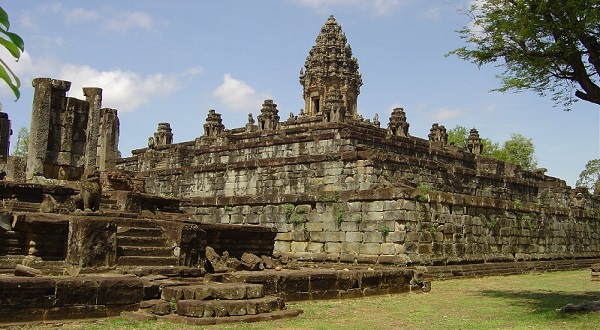
Arrive-Siem Reap
Arrive at Siem Reap international airport, Welcome and transfer to hotel.
PM: Visit to group of Roluos served as the capital of King Indravarman in 9th century; temples of Preah Ko that erected by King Indravarman I in dedication to his ancestor, Bakong is the biggest and most interesting Shiva temple of the Roluos group, and Lo Lei the temple with the sandstone carvings in the niches those are notable as are the Sanskrit inscriptions on the doorposts. Overnight in Siem Reap.
Day 2
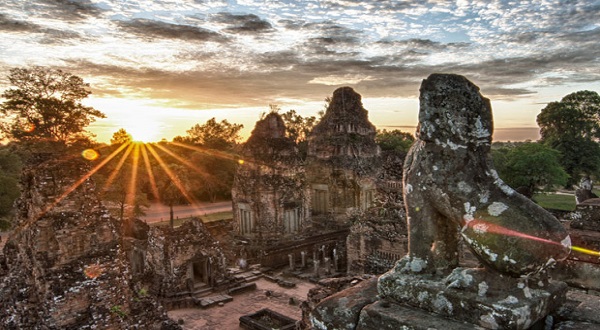
Siem Reap, Angkor (B)
Breakfast at hotel
AM: Visit to temples Banteay Srei (citadel of women) the 10th century temple dedicated to Shiva, built with pink sandstone, on the main interest are the tree central towers which are decorated with male and female divinities, and Banteay Samre a large, comparatively flat temple displaying distinctively Angkor Wat-Style architecture and artistry and many of the carvings are in excellent condition.
PM: Visit to to temples of Kravan the five brick towers were built for Hindu worship in 921 and are notable for the bas-reliefs cut into the bricks on the interior walls, East Mebon is a small temple built in 9th century, in the reign of king Rajendravarman, who named the temple ‘Yashodharatataka’ (the reservoir of Yashodhara). A thousand years ago, the waters of the East Baray would have lapped around the temple’s foundations, but nowadays it has completely dried up. And Pre Rup built in 10th century and is perhaps the best example of temple-mountain style structure. Overnight in Siem Reap.
Day 3

Siem Reap, Angkor (B)
Breakfast at hotel.
AM: Visit to South gate, temples of Bayon is the temple mountain that stands at the center of Angkor and one of the most popular of Angkor’s monument and an amazing collection of towers with smiling faces, Ba puon the pyramid shape represents the mythical Mount Meru and marks the center of the city that was here before Angkor Thom, Phimean Akas near the center of what was once the royal palace within Angkor Thom. Phimeanakas means ‘Celestial Palace’, Leper King and Elephant terraces this terrace was used for viewing public ceremonies and was a base for the King’s grand audience hall. The famous lines of elephants are at either end of the retaining walls
PM: Visit to temple Angkor Wat a temple dedicated to the Hindu god Vishnu by King Suryavarman II, who reigned between 1131 and 1150. It is the world famous for its beauty and splendor. In 1992 the UNESCO declared the monument and the whole city of Angkor a World Heritage Site. sun set view from the top of Bakheng hill. Overnight in Siem Reap.
Day 4

Siem Reap – Kampong Thom (B)
Breakfast at hotel.
AM: Visit to temples of Neak Pean built by King Jayavarman VII (ruled 1181 to 1201), it is a Buddhist temple consisting of a square pool with four smaller square pools arranged on each axis. In the center of the large central pool is a circular island encircled by two Nagas with intertwined tails, Preah Khan a temple built by King Jayavarman VII with towered enclosures and shoulder-hugging corridors in a jungle setting.
PM: Visit to Ta Prohm temple one of the most popular attractions of Angkor as much of the jungle has not been cleared and it looks very much as most of the Angkor monuments would have appeared when European explorers first stumbled across them. Drive to Kampong Thom. Overnight in Siem Reap.
Day 5
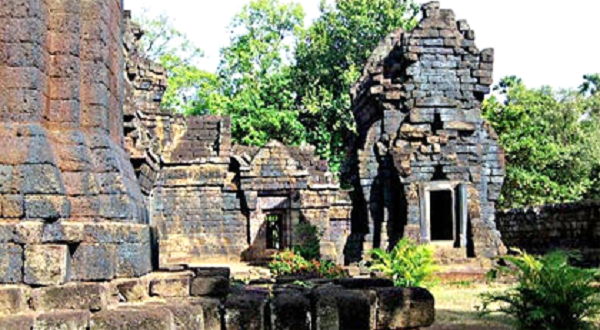
Kampong Thom – Kampong Cham – Kratie (B)
Meet with guide and driver at hotel, visit to local market to observe the activity of local Cambodian vendors who sell their local products, then continue to Kratie, en route visit to Kuk Hak Nokor temple, to reach there, passenger can take all kinds of vehicle on National Road 6, then turn west through the gate of Kuh Nokor pagoda in a distance of 2km. It is 79km from Provincial Town of Kampong Thom. These sanctuaries were built in 10th – 11th century by the king Suryavarman I on the flat ground, on a square terrace made of laterite and sandstone facing to the East with the rampart surrounding, continue to Kampong Cham the third largest city in Cambodia by passing Skun town where many venders sell spider, and it has been know as spider ville, visit to Nokor Bar Chey the ancient temple with modern style pagoda, visit to rubber plantation in the region established by the French to make Michelin tire. Then continue to Kratie is the sleepy Mekong River town situated on the east bank of river. It’s very picturesque with sandbars and big islands out front and bends in the river. Unlike in many towns around Cambodia, there are some nice-looking homes of French and Khmer style scattered about, adding to the pleasant feel of the place. Overnight in Kratie.
Day 6
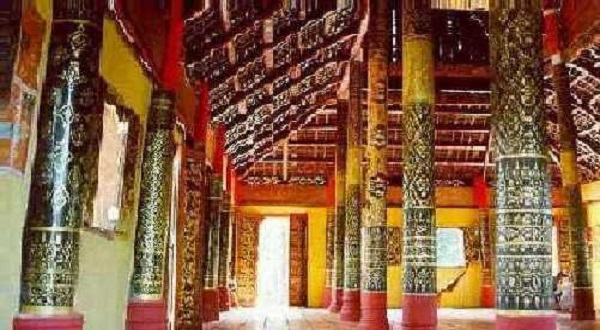
Kratie (B)
After breakfast, take local ferry boat to the Mekong island (Koh Trung) here you will see the daily activity of Cambodian farmer in the village on the island those they grow fruits, vegetables and then we will visit the floating village nearby. We will return to Kratie in the afternoon, then visit to Wat Rokar Kandal the oldest Buddhist temple in the town. Overnight in Kratie.
Day 7
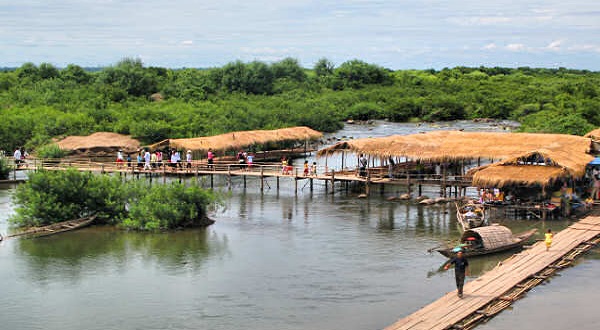
Kratie – Phnom Penh (B)
After breakfast, we will drive along Mekong river to the north of Kratie town with stop at Kampi (15km from town) is the great natural resort where is the home to dolphins, here you will see the rare freshwater Irrawaddy dolphins, with only around fifteen to twenty remaining, they are worth a visit. Continue to Phnom Penh the capital of Kingdom of Cambodia. Overnight in Phnom Penh.
Day 8
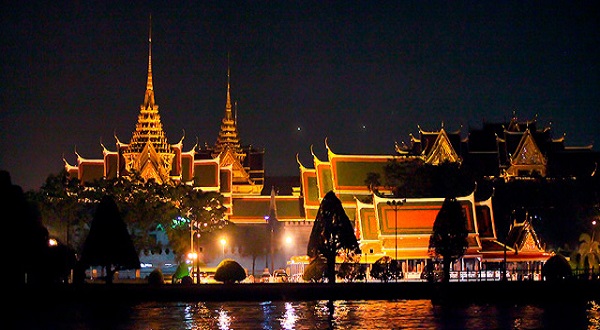
Phnom Penh (B)
Breakfast at hotel.
AM: Visit to Royal Palace is a good example of classic Khmer architecture found in Cambodia and is the residence of his Majesty King Norodom Sihamony, Silver pagoda is a royal temple cover with more than 5000 silver tiles, its main building houses many national treasures such as gold and jeweled Buddha statues. Most notable is a small 17th century baccarat crystal Buddha (the “Emerald Buddha” of Cambodia) and a near-life-size, Maitreya Buddha encrusted with 9,584 diamonds dressed in royal regalia commissioned by King Sisowath. National museum that many of the Khmer’s most important work of arts can be found here.
PM: Visit to Wat Phnom is Phnom Penh symbol, and a distinctly historical place. It is site on an artificial hillock north of the city. Built in 1434 to commemorate a woman named Penh who reputedly discovered four scared Buddha images, Tuol Sleng a former high school was turn to a torture center and prison during Khmer Rouge that was known as S21.
Day 9

Phnom Penh – Departure (B)
Breakfast at hotel. Day at leisure till transfer to airport for departure.



